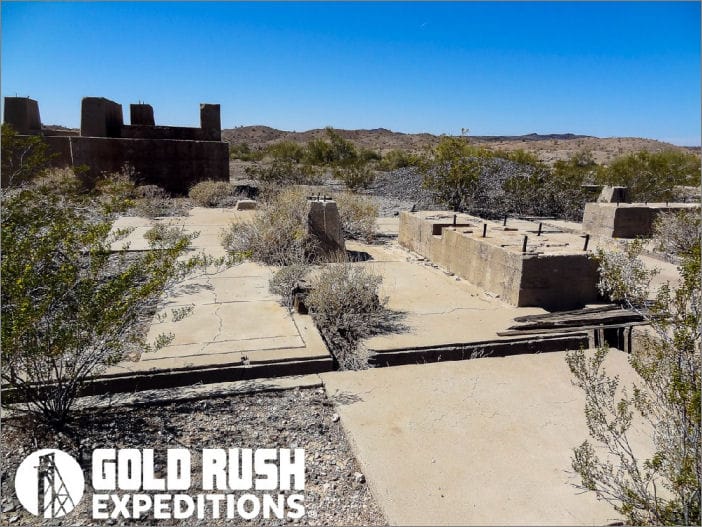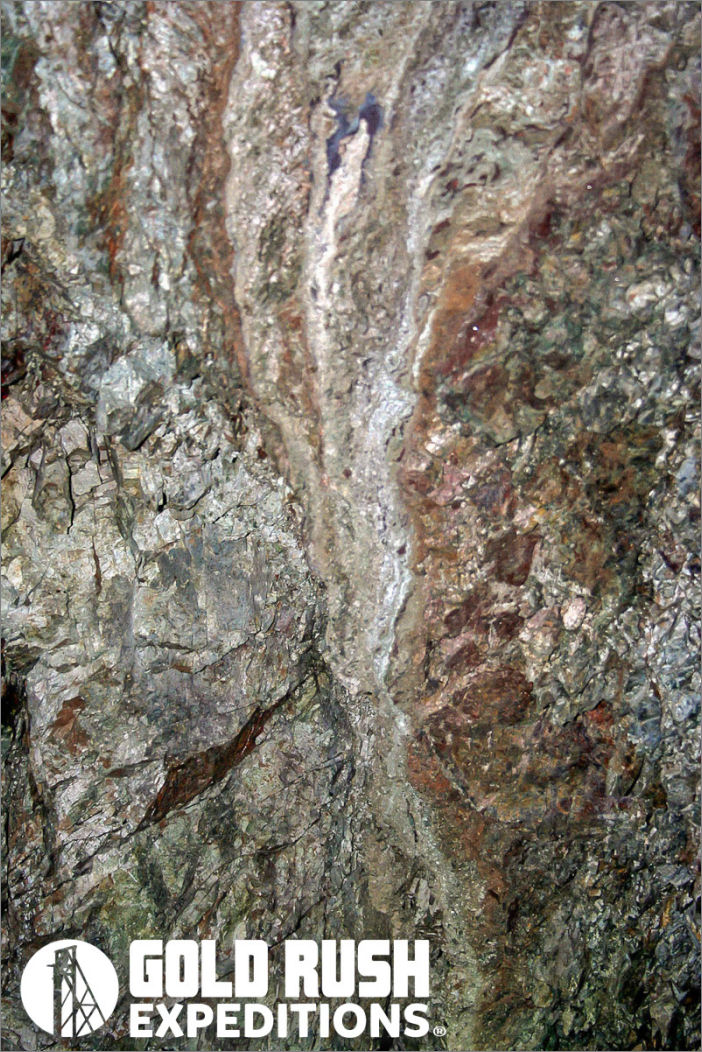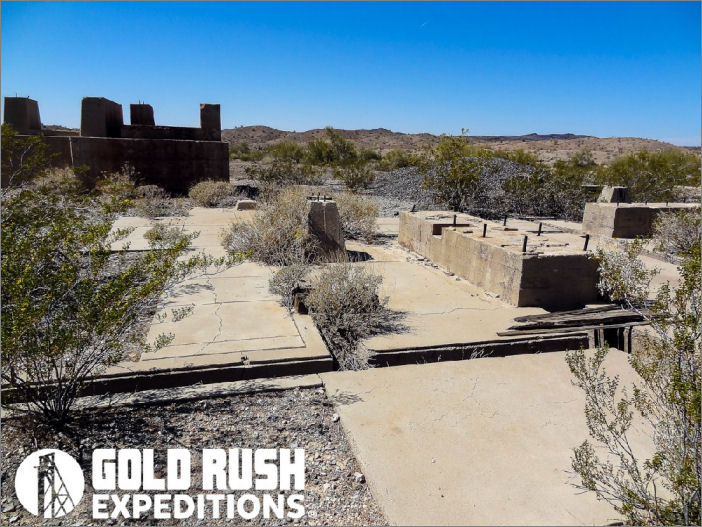Historic New Standard Mine and Mill
60 Acre Lode Claim Cienega District
La Paz County, ArizonaContact Gold Rush Expeditions
Use code JRM1003 for a 10% discount.
www.goldrushexpeditions.com
Ph: 385-218-2138
Email: goldrush@goldrushexpeditions.com
Gold Rush Expeditions, Inc. is proud to present the Historic New Standard Gold Mining Claim. This is a 40 acre lode Mining claim for sale exclusively through Gold Rush Expeditions, Inc. The claim is located just outside of Parker, Arizona and has been properly staked and marked at all corners. All Gold Rush Expeditions, Inc. claims have been meticulously surveyed, mapped and researched. Field work is completed by our own experienced, well versed Mine Survey Team.
The historic New Standard mining claim is located 17 miles east of Parker, AZ. It is located in the Cienega Mining District which is reported to have produced over 11,000 ounces of gold prior to 1941[3] The mines in the area produce native gold in quartz in pocket deposits. The mines are also known for copper deposits in the form of azurite and malachite and deep, wide veins of deep blue copper. The New Standard is a collection of adits, shafts and drifting estimated at over 4000'. There are two accessible shafts in the heart of the mining area. These are assumed to be the last remaining of the 5 (five) that were reported in 1921. The shafts have been reported to be as deep as 365'(three hundred and sixty five feet) with drifting on multiple levels. The mine site is large and two lode claims were needed to address the mines and the mill site. This gives a total of 40 acres of mineral rights.
 Access to the mine is through a wash road that is a direct route but can be deep and challenging. High clearance 4WD is recommended. There are multiple concrete pads on the claim, a remnant of the old mining days. These are excellent for staging and parking of vehicles and or equipment.
Access to the mine is through a wash road that is a direct route but can be deep and challenging. High clearance 4WD is recommended. There are multiple concrete pads on the claim, a remnant of the old mining days. These are excellent for staging and parking of vehicles and or equipment.
The New Standard is a large claim site and is suitable for a small to mid sized mining operation. The underground workings will need rehabilitation, which is a simple task and can be addressed by the owner or a contracted out to a mining development company. A report from 1965 states that the gold was found in waste dumps at the New Standard and Little Golden prospect areas. These mines are both contained within the two mineral claims.
History of the Mines
The Standard Copper Company acquired this property in January of 1917. The prior owners invested $100,000 through the development of five shafts. After it was bought, the Standard Copper Company invested $35,000 in exploratory drilling. By 1919 the property had shafts that ranged from 10' to 100', and was further developed in 1921 where the shafts ranged from 10' to 365'.
Mining engineer E. J. Costello made this statement in 1919
I think there is a good chance to find large deposits of secondary enrichment, as the conditions are favorable, the ground, due to extreme fracturing, has carbonates of copper in most all fractures and cavities, but the porphyritic schists being almost thoroughly leaches, the values would in that case be carried down with the water and reprecipitated, as the natural solvents are in the field and would grow progressively richer with the continuation of the process. Those I believe to be the conditions of this property.
 In 1919, from an average of eighteen assays there showed to be 7.90% copper. From the 13 assays that showed gold, the samples averaged to a value of 62 cents.
In 1919, from an average of eighteen assays there showed to be 7.90% copper. From the 13 assays that showed gold, the samples averaged to a value of 62 cents.
Samples collected in the New Standard mine and Little Golden prospect areas (fig. 5, area 6) have anomalous concentrations of gold, cobalt, copper, and iron, and slightly anomalous concentrations of silver, barium, bismuth, molybdenum, lead, antimony, and tungsten. Gold was detected in five rock samples (two at 10 ppb, one at 100 ppb, and two at 200 ppb) from this area.
A common suite of elements found in anomalous concentrations is evident in analyses of stream-sediment, HMC, and rock samples from around the Pride, Mammon, and New Standard mines, the Little Golden prospect, and prospects near Squaw Peak. Anomalies are relatively strong for copper and iron, relatively weak for silver, barium, bismuth, molybdenum, lead, and tungsten, and variable for gold, arsenic, cobalt, manganese, antimony, and zinc.
Contact: Gold Rush Expeditions
Use code JRM1003 for a 10% discount.
www.goldrushexpeditions.com
Ph: 385-218-2138
Email: goldrush@goldrushexpeditions.com


